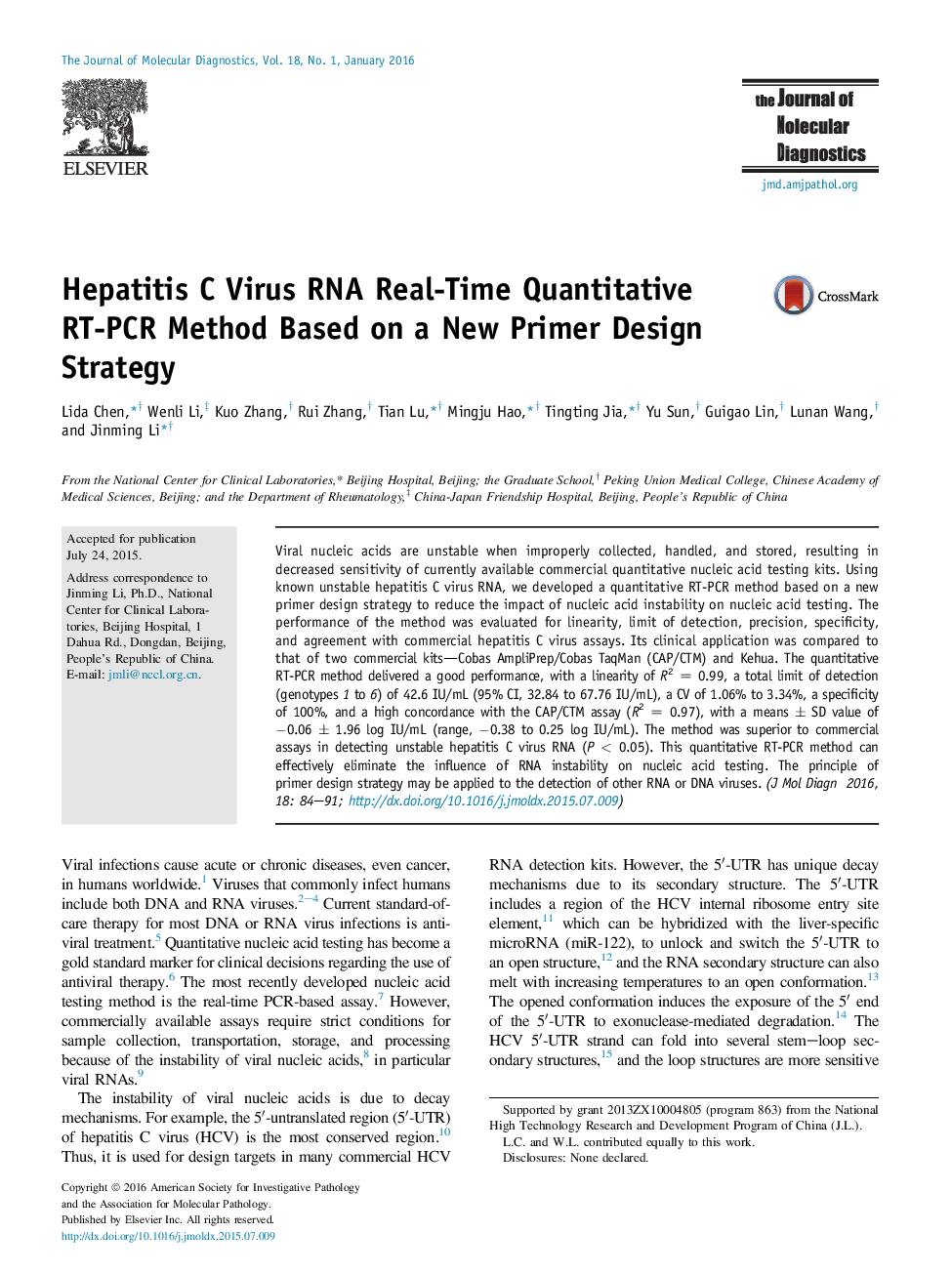| Article ID | Journal | Published Year | Pages | File Type |
|---|---|---|---|---|
| 3327686 | The Journal of Molecular Diagnostics | 2016 | 8 Pages |
Viral nucleic acids are unstable when improperly collected, handled, and stored, resulting in decreased sensitivity of currently available commercial quantitative nucleic acid testing kits. Using known unstable hepatitis C virus RNA, we developed a quantitative RT-PCR method based on a new primer design strategy to reduce the impact of nucleic acid instability on nucleic acid testing. The performance of the method was evaluated for linearity, limit of detection, precision, specificity, and agreement with commercial hepatitis C virus assays. Its clinical application was compared to that of two commercial kits—Cobas AmpliPrep/Cobas TaqMan (CAP/CTM) and Kehua. The quantitative RT-PCR method delivered a good performance, with a linearity of R2 = 0.99, a total limit of detection (genotypes 1 to 6) of 42.6 IU/mL (95% CI, 32.84 to 67.76 IU/mL), a CV of 1.06% to 3.34%, a specificity of 100%, and a high concordance with the CAP/CTM assay (R2 = 0.97), with a means ± SD value of −0.06 ± 1.96 log IU/mL (range, −0.38 to 0.25 log IU/mL). The method was superior to commercial assays in detecting unstable hepatitis C virus RNA (P < 0.05). This quantitative RT-PCR method can effectively eliminate the influence of RNA instability on nucleic acid testing. The principle of primer design strategy may be applied to the detection of other RNA or DNA viruses.
